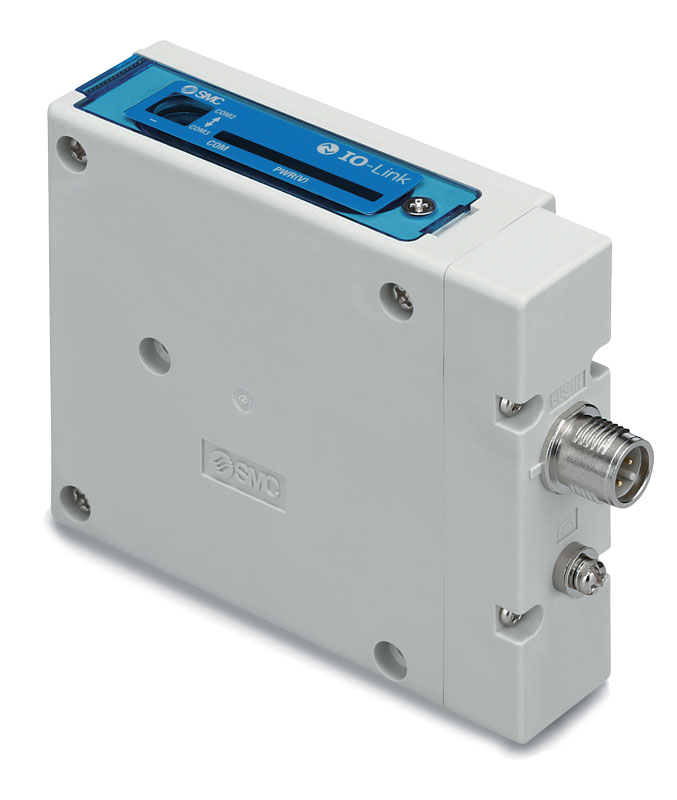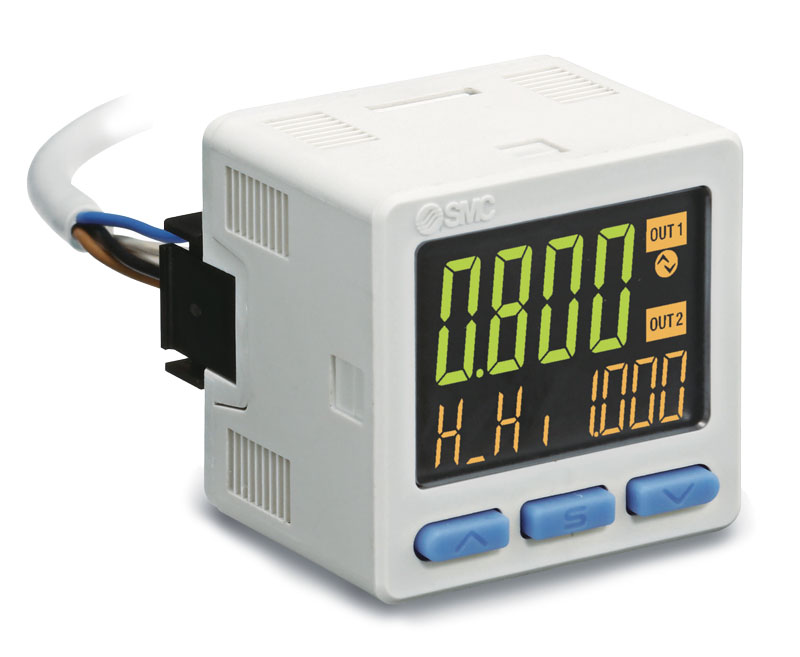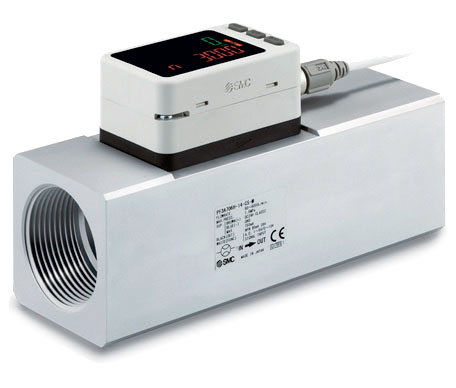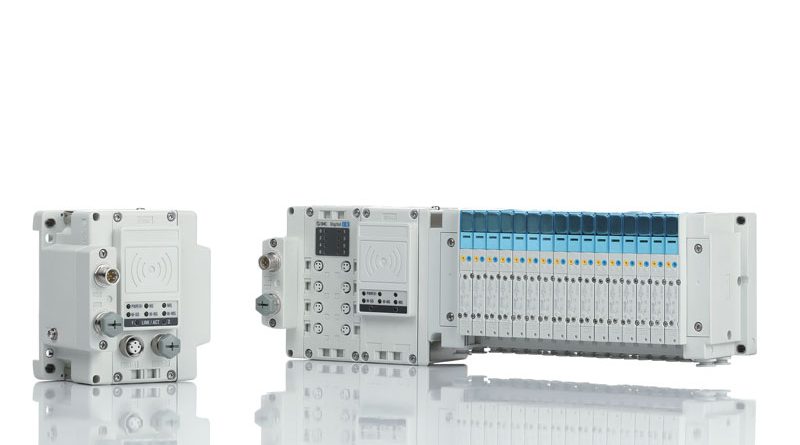A digital and wireless factory
Cables are often a hindrance in factories because they are difficult to install and their maintenance can lead to downtime. Wireless solutions can be a big help, because they enable the reduction of costs in the plant and its conversion into a flexible and digital Smart Manufacturing. Massimo Gazzaniga, Technical Support Engineer at SMC Italia, explained in his speech at the Assembly Week what technologies are offered by SMC and what is their vision of Industry 4.0.
SMC is a well-known name in the world of industry, but shall we start by providing a quick history of the company anyway? Who is SMC and what does it do?
SMC was founded in 1959 in Tokyo, Japan, as a manufacturer of sintered metal filters and filter elements. The evolution from pneumatics to more sophisticated automation solutions has enabled SMC to achieve a market share of 30% globally, and 65% on the Japanese market. With 12,000 basic products and more than 700,000 variants, SMC offers solutions ranging from air treatment to instrumentation, as well as valves and actuators covering every step of the automation process. Worldwide, we are present in 82 countries with more than 20,000 employees, 34 production centres and five technical centres for product development. With around 8,700 sales engineers, we pursue customer satisfaction worldwide.

Wireless systems are an important option in any industry using communication cables. Could you explain in more detail what advantages and added value these solutions can provide?
Ten years have gone by since the term Industry 4.0 was first used at the Hanover Fair. The concept is now becoming more commonplace and digital technologies more frequent in industrial environments, and wireless serial communication is an integral part of this. For many companies, the rise of smart factories has brought with it a renewed focus on the possibilities offered by different industrial networks. This has meant an increase and development of new communication protocols and technologies such as EtherNet/IP, RFID and Bluetooth. Nevertheless, the predominant factors in these communication protocols are still the same: reducing the number of time-consuming connections and the use of cables in applications, facilitating maintenance and simplifying the control and monitoring of devices in manufacturing plants. The benefits of wireless systems are many in industries which regularly use wired control applications for communication systems. These certainly include assembly lines in the automotive industry, the manufacture of electronic components, or any industry where rotary tables and robotic systems are normally used. In these systems, laying down communication cables is a major problem for two main reasons: firstly, the continuous movements often damage the cables or disconnect them during the different processing phases, thus leading to frequent maintenance operations or even cable replacement with consequently higher running costs. Secondly, in the design of many systems, connecting cables are often in close proximity to high-voltage cables, which may therefore interfere with communication signals. In these areas, wireless communication offers a viable and cost-effective solution. SMC has developed the EX600-W wireless fieldbus system in response to this growing need for reliable wireless communication technology in manufacturing plants. The system provides completely interference-free encrypted data communication which can be easily connected and modified. This flexibility translates into greater business possibilities and fewer cables, less maintenance, less damage and fewer disconnections.
Cables in control or rotating applications are often subject to disconnection, damage or breakage, resulting in high replacement costs and lost working hours to carry out annual maintenance as well as costs for scheduled or unscheduled downtime. Common copper wiring, if not properly shielded, is susceptible to interference, which can cause data loss, unreliable transmissions and damage, thereby affecting the overall performance and operation of equipment. Laying cables requires careful consideration in terms of feasibility and safety, and it may also be difficult to change the layout and arrangement of equipment according to different requirements. Wireless systems solve all these issues.
SMC’s wireless solution is the result of working closely with companies in different industries to better understand their requirements and challenges: the EX600-W system enables a reduction in cables and connectors. It uses the 2.4 GHz ISM frequency band and a 79-channel FHSS with a frequency change every 5 ms for greater interference resistance. This makes it particularly suitable for use in industrial environments, where electromagnetic pollution ranges from 5 MHz in motor drivers and electrical resistors to 1 GHz in welding applications. The system integrates easily and quickly with existing configurations, and communication with remote units can take place in as little as 250 ms. The base unit is connected to a standard Ethernet connection such as Ethernet/IP or Profinet. The base unit is able to communicate in wireless mode and control up to 127 remote units in a range of up to 10 m. These remote units can be mounted with modules to manage analogue, digital and pneumatic equipment to provide input, output and valve control functionality. We have also witnessed several cases of companies reducing costs by using wireless systems. In one specific case, a customer had to find the perfect solution for the use of a rotary table by an end user. This was being used to feed metal foils onto an arc welding device, moving in one direction, and our toggle-type clamping cylinders were being used to clamp the foils. During this project, the integrator was supposed to solve the problem caused by the signal transmission from the sensors to the control unit. They initially used a multi-functional rotary connector and a valve manifold, resulting in increased costs: the company felt that using wireless could perhaps be a more cost-effective investment. The company then decided to use the EX600-W system in the production of subsequent machines, which provided excellent results in terms of economic efficiency and thus solved the problem of rotating connections and noise.

SMC produces, among other things, IO-Link sensors, intelligent systems which help to optimise production. Could you tell us what you are offering in this respect for the assembly world?
Aiming to improve production performance using more automated operations and data analysis, Smart Manufacturing (SM) is the holy grail of our time. This approach, based on technology which uses connected machinery to monitor the production process, has seen the development of smart machine components. SMC’s IO-Link controllers, master and sensors are just some of the intelligent products which can help improve productivity and reduce costs. IO-Link is an open serial communication protocol enabling the two-way exchange of data from sensors and devices. Some of the advantages of using IO-Link sensors in the assembly world are: increased data availability; process data, with readings taken from the device; information service data on the device itself; diagnostic data; standard wiring; and fully digital measured value transmission. In addition, the plug & play substitution simplifies connection, due to the presence of a standard connector for communication and power supply. Parameters are saved in the master, enabling automatic setting after connecting the device. There is no need to wait for a process failure to replace a sensor: the devices are always monitored to know their condition via event data. Another advantage is remote access: full control of settings through the master control system (PLC or PC) minimises the time needed for format changes or machine or plant start-up. Finally, they have an anti-tamper function: the key lock prevents unauthorised persons from tampering with the settings.

Let us talk about Industry 4.0, a hot topic in recent years. Many of your solutions are 4.0 and designed for the Smart Factory, which is why you talk about Smart Flexibility. Could you tell us more?
For many, Industry 4.0 is like a long wave: since its inception, the concept has changed the approach to manufacturing by introducing terms such as Internet of Things (IoT), smart sensors, cloud analytics and many others. End-users and machine builders are interested in the latest technologies, but there is still a lot of uncertainty, so a hands-on approach to Industry 4.0 is crucial for SMC. We offer a complete range of industrial automation solutions from pneumatic and electric actuators to fluid control products and air treatment systems, as well as sensors of various types. SMC uses the concept of Smart Flexibility, that is, helping our customers to build flexible machines which will implement the adaptability, speed and customisation required by their markets.
Flexibility in the industrial network means that machines and devices can communicate with each other, making the Internet of Things (IoT) a reality. Flexibility is guaranteed by the ability to integrate equipment into existing networks and speed up commissioning times, as well as ensuring that users can fully understand the system. Examples of our products have already been mentioned above, such as wireless systems or systems communicating in IO-link; in addition there are many devices which communicate with a wide variety of industrial fieldbus networks. Besides, the web server function, available on some of them, allows quick and remote access; status monitoring, fault diagnostics, parameter setting and forced outputs are some of the activities which can be managed via a generic web browser. Flexibility in intelligent maintenance concerns predictive maintenance and condition-based maintenance, ensuring the overcoming of traditional challenges and the absence of equipment downtime, and also brings reliability and security to the production process, so that companies can perform at their best. Flexibility in machine adjustments means allowing plant managers to respond quickly to constant changes in the market. Therefore, whether this means changing the format of production lines for seasonal demand or using modular machines to increase production volumes, it is vital to be able to respond quickly. The products that most enable fast and accurate format changes are electric actuators and instrumentation that can be changed remotely, for example via IO-Link communication. Smart Flexibility also includes energy efficiency: as part of the drive towards digitisation, manufacturers are called upon to optimize their production processes in a sustainable and environmentally friendly way. This approach ensures various benefits such as reduced costs, reduced energy usage and improved final profits.
To conclude, is SMC working on any new projects related to mechatronics and assembly?
SMC Italia has a dedicated department for mechatronics, made up of highly specialized technical staff to support customers and find the most suitable solutions for the various application requirements which the assembly world requires. The same department, which I too am a part of, manages products communicating with an industrial protocol. The development of new products is aimed at extending the range of mechatronic solutions (intended as electric actuators) and new devices communicating in IO-link or with other open protocols, such as OPC-UA. Regarding mechatronics, we are proud to provide support to the world of education too. We regularly hold mechatronics courses at technical colleges, and we contributed to the text Mechatronics in Industrial Automation. Finally, industry is constantly changing and progressing, and at SMC we accompany this progress: we develop around 40 new products per year. Furthermore, we provide customised solutions which can be adapted to each specific need in the assembly world and beyond. Customer satisfaction is our goal. We are prepared to face the evolution and challenges of the market in order to be by our customers’ side, enhance competitiveness and be always connected.

